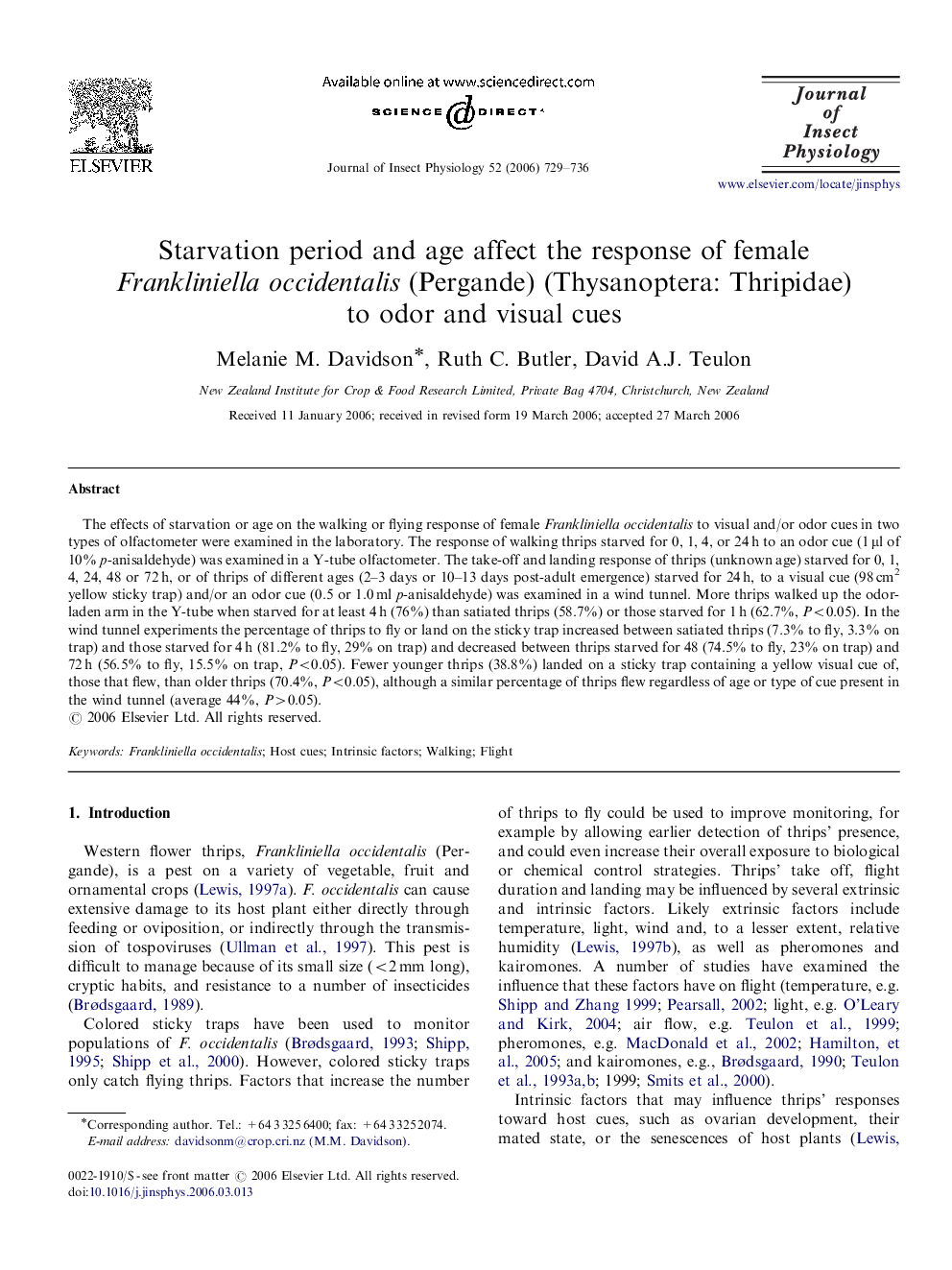| Article ID | Journal | Published Year | Pages | File Type |
|---|---|---|---|---|
| 2841693 | Journal of Insect Physiology | 2006 | 8 Pages |
The effects of starvation or age on the walking or flying response of female Frankliniella occidentalis to visual and/or odor cues in two types of olfactometer were examined in the laboratory. The response of walking thrips starved for 0, 1, 4, or 24 h to an odor cue (1 μl of 10% p-anisaldehyde) was examined in a Y-tube olfactometer. The take-off and landing response of thrips (unknown age) starved for 0, 1, 4, 24, 48 or 72 h, or of thrips of different ages (2–3 days or 10–13 days post-adult emergence) starved for 24 h, to a visual cue (98 cm2 yellow sticky trap) and/or an odor cue (0.5 or 1.0 ml p-anisaldehyde) was examined in a wind tunnel. More thrips walked up the odor-laden arm in the Y-tube when starved for at least 4 h (76%) than satiated thrips (58.7%) or those starved for 1 h (62.7%, P<0.05). In the wind tunnel experiments the percentage of thrips to fly or land on the sticky trap increased between satiated thrips (7.3% to fly, 3.3% on trap) and those starved for 4 h (81.2% to fly, 29% on trap) and decreased between thrips starved for 48 (74.5% to fly, 23% on trap) and 72 h (56.5% to fly, 15.5% on trap, P<0.05). Fewer younger thrips (38.8%) landed on a sticky trap containing a yellow visual cue of, those that flew, than older thrips (70.4%, P<0.05), although a similar percentage of thrips flew regardless of age or type of cue present in the wind tunnel (average 44%, P>0.05).
